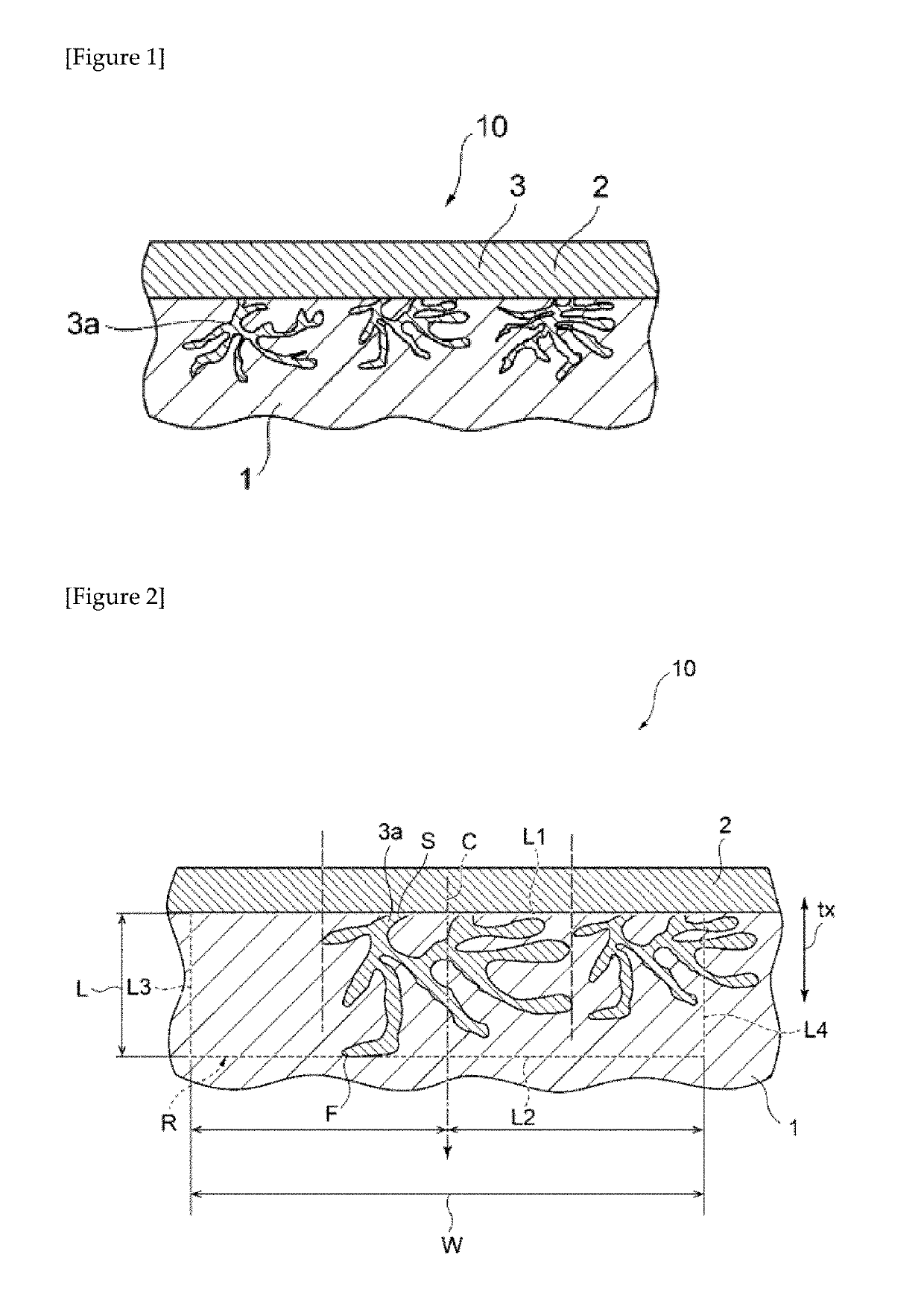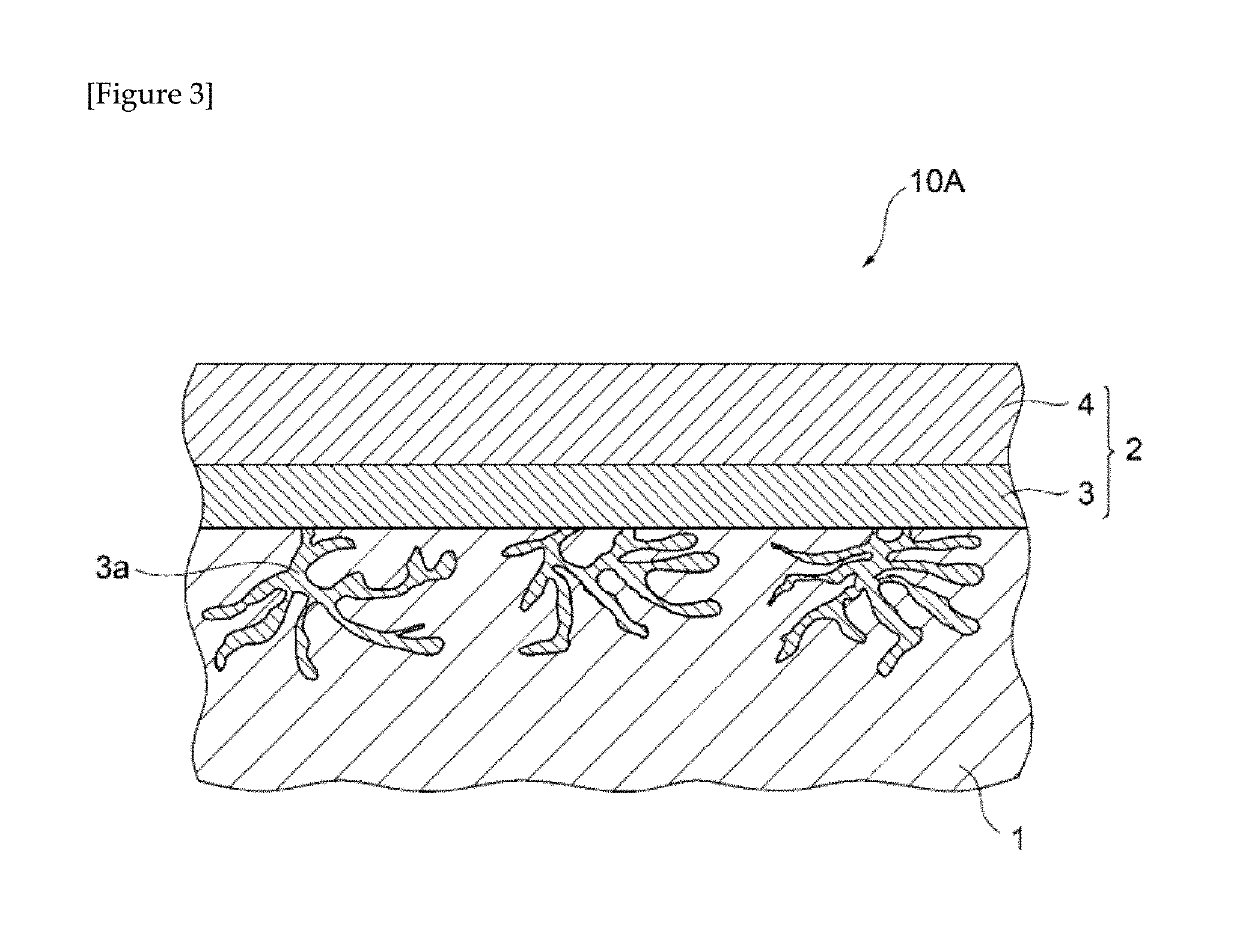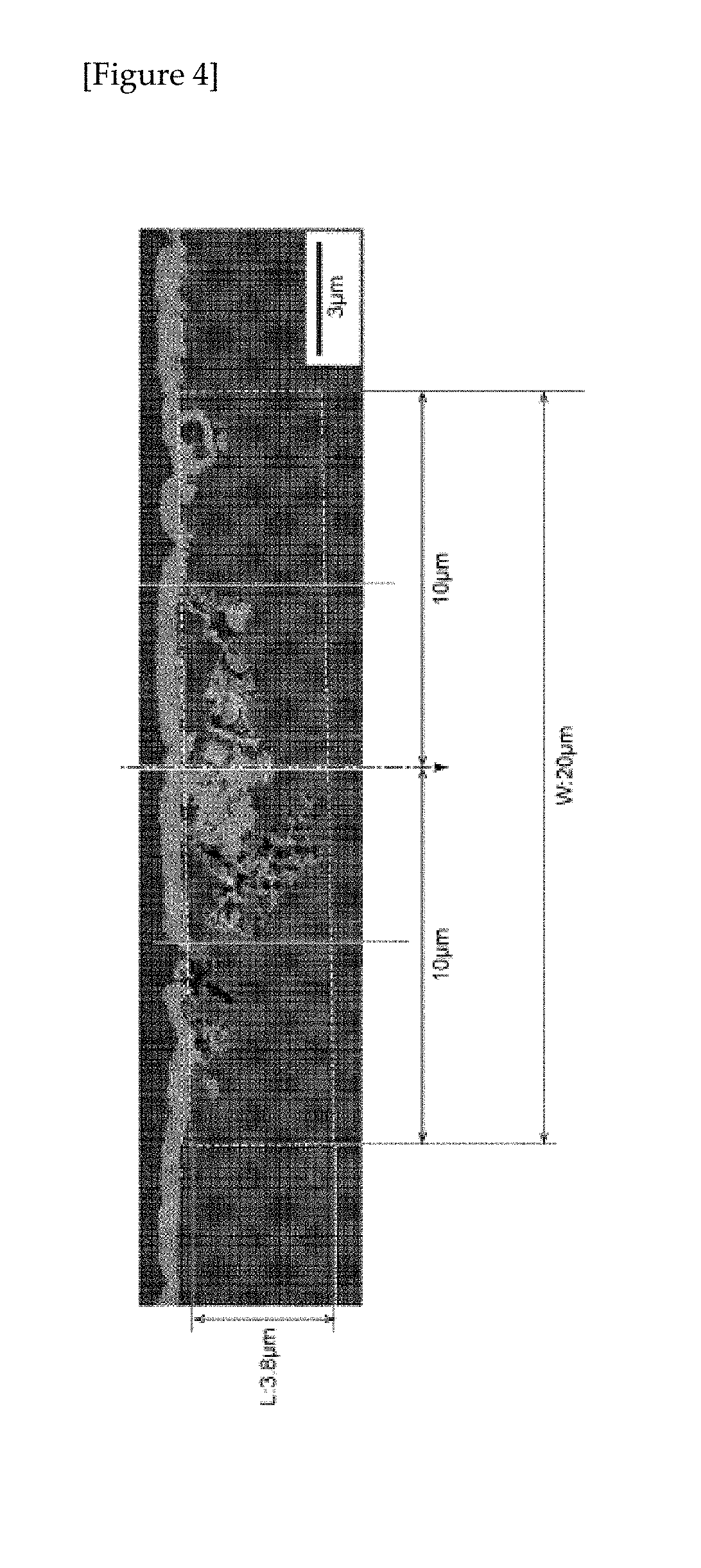Surface-treated material and component produced by using the same
a technology of surface treatment and surface treatment, which is applied in the direction of contact member manufacturing, liquid/solution decomposition chemical coating, capacitors, etc., can solve the problems of difficult formation of a plating film with adequate adhesiveness of aluminum, complicated method of aluminum surface plating, and difficulty in a base metal such as aluminum to be plated in a wet process. , to achieve the effect of safe production, simple process and low cos
- Summary
- Abstract
- Description
- Claims
- Application Information
AI Technical Summary
Benefits of technology
Problems solved by technology
Method used
Image
Examples
example 1
Conventional Example 1
[0078]In Conventional Example 1, the electrolytic degreasing step was conducted on the aluminum base material (size of 0.2 mm×30 mm×30 mm) shown in Table 11 under the above described conditions; and then a conventional zinc substitution treatment (zincate treatment) was conducted, and thereby the zinc-containing layer having a thickness of 110 nm was formed. After that, the surface activation treatment was not conducted, and the surface treatment film was formed that was formed of two layers of the metal layers which were formed of the nickel plating layer and the gold plating layer so that the thickness shown in Table 11 was obtained, by the above described surface treatment film forming step; and the surface-treated material was prepared.
example 2
Conventional Example 2
[0079]Conventional Example 2 is a surface-treated material which was prepared by forming the surface treatment film on the base material, while referring to and simulating examples of Patent Literature 4. An aluminum base material was prepared which was pretreated by etching treatment by an operation of: conducting the electrolytic degreasing step on the aluminum base material (size of 0.2 mm×30 mm×30 mm) shown in Table 11 under the above described conditions; and then immersing the aluminum base material in an etching solution that was obtained by diluting “NAS-727” (of which main component is 18% hydrochloric acid)” which was an active acid solution containing hydrochloric acid as a main component and was made and sold by Sunlight Corporation, into double volume, at a temperature of 35° C. for 2 minutes. After that, the surface of the pretreated aluminum substrate was subjected to surface activation treatment. The surface activation treatment was conducted wi...
PUM
| Property | Measurement | Unit |
|---|---|---|
| width | aaaaa | aaaaa |
| depth | aaaaa | aaaaa |
| thickness | aaaaa | aaaaa |
Abstract
Description
Claims
Application Information
 Login to View More
Login to View More - R&D
- Intellectual Property
- Life Sciences
- Materials
- Tech Scout
- Unparalleled Data Quality
- Higher Quality Content
- 60% Fewer Hallucinations
Browse by: Latest US Patents, China's latest patents, Technical Efficacy Thesaurus, Application Domain, Technology Topic, Popular Technical Reports.
© 2025 PatSnap. All rights reserved.Legal|Privacy policy|Modern Slavery Act Transparency Statement|Sitemap|About US| Contact US: help@patsnap.com



